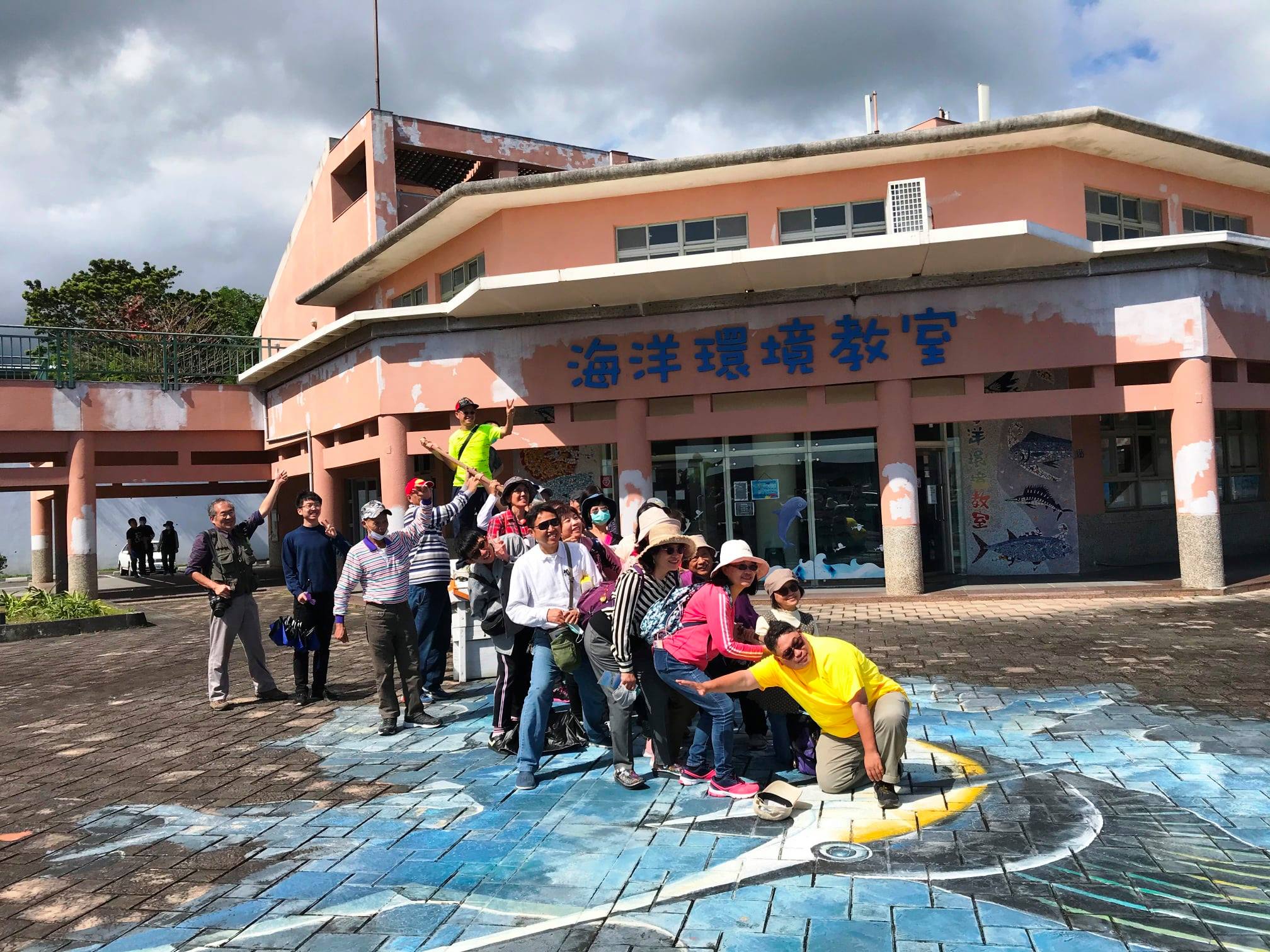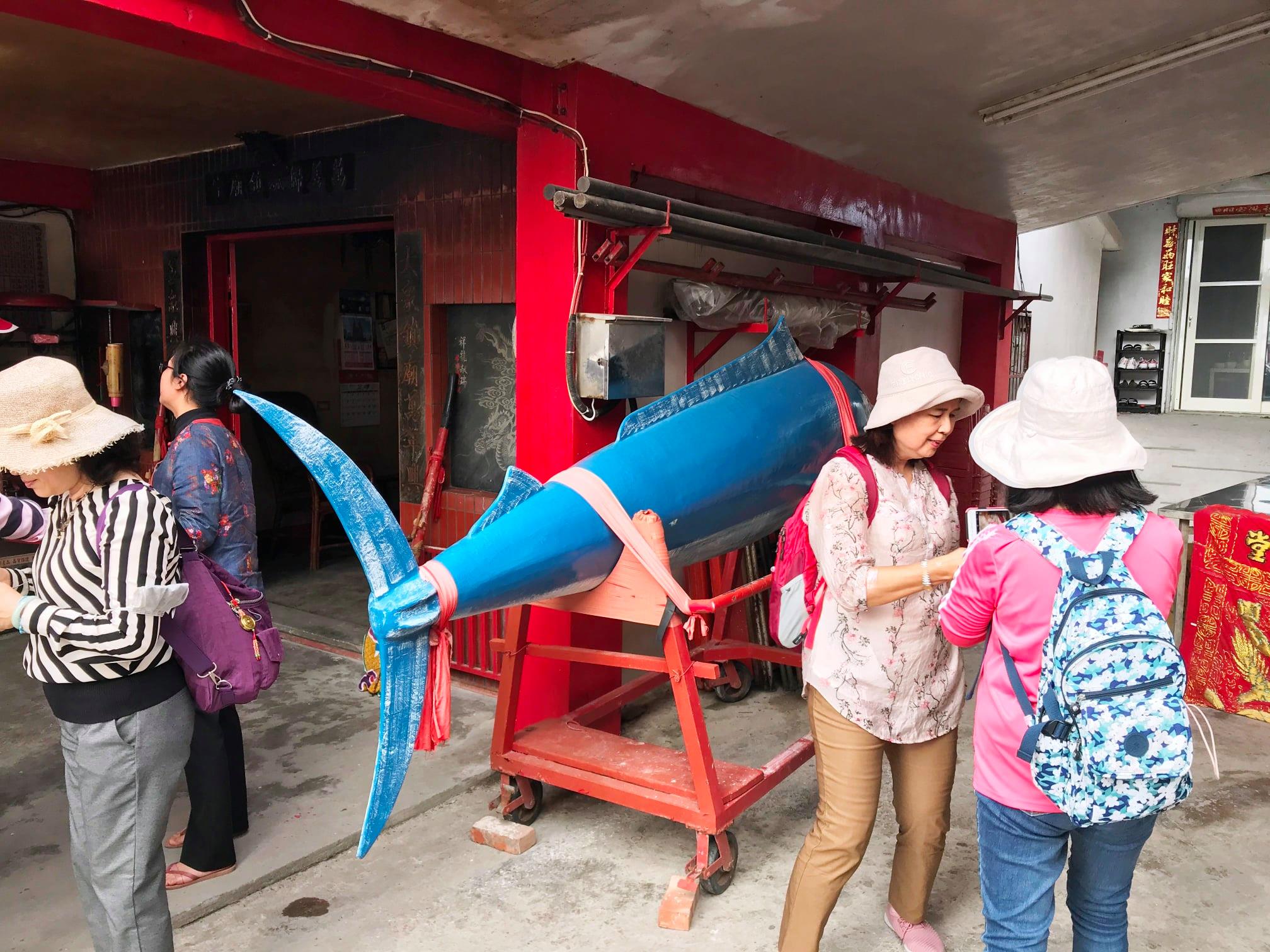Chenggong- Experience Life in a Small Taiwanese Fishing Town
Chenggong, a town with a beautiful harbor and a simple way of life, is nestled in between the mountains and the sea. On a visit here, it’s easy to slow down and enjoy the town’s vibrant fishing culture. Get a feel for what life is like here on a tour led by the East Coast National Scenic Area Administration and the Chenggong Township Association. During the tour, local guides will show you around, introduce you to small-town fishing culture and let you explore local life in Chenggong. (Photo Credit:FB@成功小鎮漁村風情之旅)

The Chenggong History Museum was built by the Chenggong Township Office. This living museum tells the entire story of how Chenggong and its fishing industry have changed over the years. The museum is divided into permanent and temporary exhibits. For the most part, people in Chenggong make a living from businesses that involve the ocean. Therefore, the permanent exhibits feature videos, dioramas and displays that teach visitors about Chenggong’s fishing industry. This includes exhibits on fishnet making and marlin fishing. The temporary exhibits give historical context on Chenggong’s culture, art and businesses. See traces of years gone by. Hear locals tell stories about what life was like way back when. A visit to the Chenggong History Museum will give you fond lasting memories of what fishing life is all about.
It’s crazy that this old Japanese house 90 years old! It stands like an old wise sage as a proof of the passing of time. In 2003, the Taitung County Government deemed the mansion as a historic building because of its cultural importance. Locals still love to talk about the story of how the mansion came to be. During the Japanese occupation, the governor of Shinko (modern day Chenggong) was facing reassignment to a different area. He then retired from civil service because he didn’t want to be transferred out of Chenggong. Later on, he built this mansion for himself. His actions showed how much the former governor loved Chenggong. After Taiwan was ceded back to the Republic of China, the mansion became a local hospital. Today, the mansion is used as a meeting house for the people that attend Sinkang Presbyterian Church.

For the people of Chenggong, this ice factory isn’t just any old warehouse. The construction of the ice factory was a major turning point for the local fishing industry. Thanks to ice, fish that was formerly salted could remain unpreserved. In the time before the ice factory, shipping anything took quite a while. Therefore, fish that wasn’t shipped right away had to be salted or else it would spoil. The ice factory was originally built on a small hill next to the fishing harbor. Later, it moved to a building near the harbor. Crushed ice from the current factory is transported along a track to the harbor below. The ice helps keep the fish fresh and has increased how much local fishermen can earn. Hearing ice rumbling on the tracks way up high is super cool!

The next stop is the most exciting one on the trip. Here you get to see a fish auction in action! The Chenggong Fishing Harbor, which is the largest deep water fishing harbor on the east coast, is different than other places that sell fresh fish. Fishermen bring in tons of fish here because the Kiroshio Current and the Oyashio Current both pass through the waters nearby. Marlin, Mahi Mahi, tuna and other types of large fish get lined up on the floor of the harbor every afternoon. It’s impressive what these boats haul in every day! The Chenggong Fishing Harbor has been holding live fish auctions since the 80s. Every afternoon at 2:30, the action starts as boats gradually mosey back to port. The docks get quite hectic as buyers shout out their bids to the people selling their catch. This lively scene is something you’ve got to see for yourself!

Cars need to go into the shop every once and a while, why would boats be any different? This stop is the place where boats come for a little TLC. Boats large and little line up to “get on the rack.” After lining up with a pair of tracks on shore, boats then drive in place and get attached to a platform. Once pulled out of the water, the boats start their spa treatment. A maintenance crew scrapes off all the critters, such as barnacles, tube worms and algae, that have attached themselves to the bottom of the boat. Then, they put on a layer of antifouling paint, so sea creatures won’t grow back. After getting their bath and paint job, these boats can take on just about anything!

The deep blue sea is brimming with beauty and color. At the Marine Environmental Classroom, you can get to know the marine ecosystem that surrounds Chenggong as well as the area’s fishing culture. The center has an exhibit displaying specimens of marlin bills. This exhibit also explains the different types of marlin, how they are caught and what fishermen use to catch them. You can get a taste for just how hard the seafaring life is by watching videos of fishermen spearing marlin. In addition, the center has models and specimens of different types of dolphins and whales. Here, you can get to know the whales and dolphins that are commonly seen in Taiwan. Most importantly, you can learn what to do to protect these adorable animals. On weekends and holidays, they offer whale and dolphin watching tours. For those who are interested, visit the center’s official website for more info.

The marlin symbolizes fishing life in Chenggong. The Kuroshio Current brings countless marlin to the people of Chenggong every year. At this stop, we’re going to visit the Wanshan Temple. Here, people worship Taiwan’s one and only marlin god. According to legend, the gods came to the temple’s priestess in her dreams. They told her to make a wooden marlin for the village fishermen to worship. This would keep the fishermen safe while they were out at sea, and make sure they came home with a bountiful catch. During the Lunar New Year and before fishermen head out to sea, they come to the temple and pray. They believe that rubbing the wooden marlin’s head, belly and tail will bring them good fortune.
Sisters of Mercy of the Holy Cross has a monastery in Chenggong. It’s also known as the White Butterfly House. The nuns here wear white robes and headdresses. Therefore, when they ride around on their scooters, a trail of white follows them as the speed past. From afar, they look like white butterflies spreading seeds of hope all over the east coast. These nuns have never shied away from hard work since their arrival from Switzerland in the 50s. They originally came all the way over to help the people of Chenggong with medicine, education and childcare. For years, they’ve dedicated themselves to selfless service, running all over the township providing medical care. From the costal hamlets to the mountain villages of Chenggong, the locals have considered these nuns as one of their own for many years.
The Chenggong Fishing Harbor was built during the Japanese occupation. After construction finished, the colonial government taught people how to spearfish marlin. Many people then immigrated from Chiba and Wakayama, Japan and settled in Chenggong to become fishermen. These new arrivals moved into a village set up specifically for immigrant fishermen. The village, which was south of Zhongshan Road and east of Guangfu Road, had as many as 70 households at one point. Later, the village became even more culturally diverse when people from Hengchun and Green Island moved in. However, in recent years, it’s gotten harder to bring in catch and fishermen have entered other lines of work. Therefore, the village has changed dramatically. During your visit, slow down and look at these classic houses. You can feel just how much time has passed as you listen to your guide tell glorious stories of when this fishing town was a booming economic hub.
- Tour Organizer: Chenggong Township Association
- Telephone Number: 089-851174, 089-851276, 0919-128356 (Booking can only be done by telephone)




